Dentaderm @ The New Normal
Dental Clinics in the Philippines were allowed to operate last June, 2020 as the economy tries to reopen and jumpstart again after the series of quarantine conditions. Initially, patients were rather hesitant to avail of such services in fear of contracting the dreaded COVID-19 virus. However, Dentaderm Clinics assure their patients that they highly comply with the IATF Protocols to totally make their services safe and effective.
Dentaderm adopted to the NEW NORMAL in terms of service and compliance of onsite accommodation of customers. In this video, we can see how Dentaderm attendants and doctors are properly attired to comply with the IATF Standards in operating a dental clinic. Here, Dentaderm gives us a glimpse on how they attend to clients and how they closely observe the IATF Protocols given the still current situation of the pandemic.
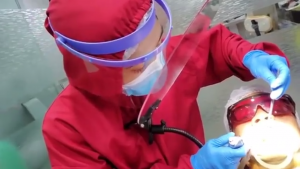
Based on IATF Protocols in observing social distancing and avoiding overcrowding of patients in the clinic, Dentaderm now accepts patients thru reservation as much as possible avoiding walk-ins to regulate the inflow and outflow of patients in the clinic. This will control the flow of patients in and out of the clinic avoiding the possibility of overcrowding. Although, Dentaderm will still accommodate emergency cases such as patients experiencing tooth pain or swelling are immediately given treatment. All patients have to fill out our contact information forms indicating their personal information for contact tracing purposes before showing up at the clinic.
The clinic’s reception and treatment area are now covered with medical-grade plastic sheets. They have removed waiting rooms, provided alcohol and sanitizers, installed air purifiers, and utilized PPE — which is changed after treating every patient, she added.
Dentaderm also observes regular ultraviolet disinfection process of the spaces, machines and equipment. They regularly sanitize tools and properly disposes of used items to avoid unnecessary contact with other foreign objects.
Dentaderm knows that it’s important to maintain the trust and confidence of patients by taking steps to demonstrate that they place their health and safety above all. Dra. Joyce Ambray also believes that patients will keep seeing dentists because more Filipinos now understand the value of good oral hygiene.

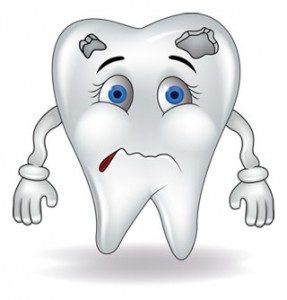 Braces Prevent Cavities. True enough, having better aligned teeth makes it easier to remove food trapped in-between teeth. Properly spaced and aligned teeth minimizes hard to remove food particles by simply allowing a toothbrush to do its work or for hard to remove food items (beef, pork, etc.), it is easier to floss as compared to flossing crookedly aligned teeth.
Braces Prevent Cavities. True enough, having better aligned teeth makes it easier to remove food trapped in-between teeth. Properly spaced and aligned teeth minimizes hard to remove food particles by simply allowing a toothbrush to do its work or for hard to remove food items (beef, pork, etc.), it is easier to floss as compared to flossing crookedly aligned teeth. Braces Prevent Gum Disease. Gums cannot properly support a tooth when crookedly aligned resulting to gum disease. This weakens the gums around the tooth allowing foreign particles and bacteria to reside between them. This normally result gingivitis… or worse… periodontitis. Properly aligned and spaced teeth allow the gums to firmly hold each tooth eliminating unnecessary spaces where bacteria and foreign food particles may get trapped and eventually cause discomfort.
Braces Prevent Gum Disease. Gums cannot properly support a tooth when crookedly aligned resulting to gum disease. This weakens the gums around the tooth allowing foreign particles and bacteria to reside between them. This normally result gingivitis… or worse… periodontitis. Properly aligned and spaced teeth allow the gums to firmly hold each tooth eliminating unnecessary spaces where bacteria and foreign food particles may get trapped and eventually cause discomfort.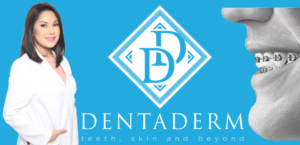
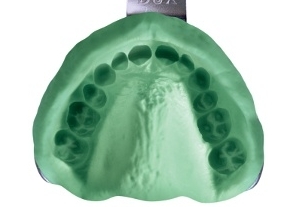 Polyvinyl siloxane (PVS), an addition-reaction silicone elastomer, is widely used in dentistry as a dental impression material. It was commercially introduced in the 1970s. This is a viscous liquid that molds quickly into a rubber-like solid, taking the shape of whatever surface it was lying against while curing. As with two-part epoxy, its package keeps its two component liquids in separate tubes until the moment they are mixed and applied, because once mixed, they cure (harden) rapidly.
Polyvinyl siloxane (PVS), an addition-reaction silicone elastomer, is widely used in dentistry as a dental impression material. It was commercially introduced in the 1970s. This is a viscous liquid that molds quickly into a rubber-like solid, taking the shape of whatever surface it was lying against while curing. As with two-part epoxy, its package keeps its two component liquids in separate tubes until the moment they are mixed and applied, because once mixed, they cure (harden) rapidly.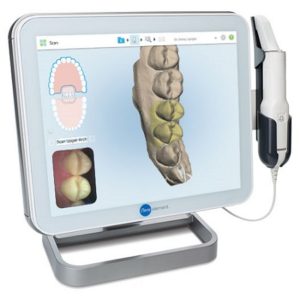 However, technology has taken vast improvement over PVS impressions. The iTero™ Intraoral Scanner provides increased impression accuracy for better fitting aligners and restorations. It brags of lower rejection rates and lesser fitting issues.
However, technology has taken vast improvement over PVS impressions. The iTero™ Intraoral Scanner provides increased impression accuracy for better fitting aligners and restorations. It brags of lower rejection rates and lesser fitting issues. connectivity. iTero™ open format STL files also can be integrated with third party CAD/CAM systems, CT scan files and digital orthodontic services allowing development of surgical guides and same-day temporization.
connectivity. iTero™ open format STL files also can be integrated with third party CAD/CAM systems, CT scan files and digital orthodontic services allowing development of surgical guides and same-day temporization.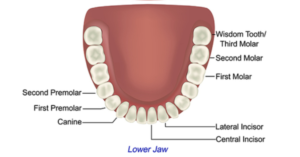 The wisdom tooth is commonly described as the last molar of both the left and right sides of the upper and lower jaws. They can also be termed as the third molar in the sequence. Some would say it is the most popular tooth but yet it would also be described as the least performing tooth (if not totally useless) of all. Apparently, they are the last to emerge normally during later stage of teenage life and for some, at the early stage of adulthood. During its emergence, it is usually accompanied by a slight pain and sometimes with a slight fever due to the process of its protrusion to the gums.
The wisdom tooth is commonly described as the last molar of both the left and right sides of the upper and lower jaws. They can also be termed as the third molar in the sequence. Some would say it is the most popular tooth but yet it would also be described as the least performing tooth (if not totally useless) of all. Apparently, they are the last to emerge normally during later stage of teenage life and for some, at the early stage of adulthood. During its emergence, it is usually accompanied by a slight pain and sometimes with a slight fever due to the process of its protrusion to the gums.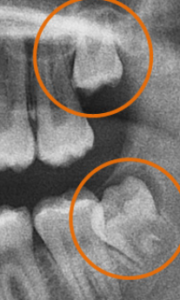 A common problem with wisdom teeth is impaction. Impaction can be described as the failure of the tooth to protrude normally such that it may position itself under another tooth or worse, emerge diagonally pushing on to the tooth immediately beside it. This may cause the erupting tooth to show partially or not at all, having itself embedded just below the gum line and jawbone. Such occurrence may be accompanied by pain and at times, causes tooth damage to both protruding and surrounding teeth.
A common problem with wisdom teeth is impaction. Impaction can be described as the failure of the tooth to protrude normally such that it may position itself under another tooth or worse, emerge diagonally pushing on to the tooth immediately beside it. This may cause the erupting tooth to show partially or not at all, having itself embedded just below the gum line and jawbone. Such occurrence may be accompanied by pain and at times, causes tooth damage to both protruding and surrounding teeth. Cryolipolysis is a medical treatment used to destroy fat cells by freezing. Fat cells freeze at higher temperatures than surrounding tissues. The technology safely delivers precisely controlled cooling to gently and effectively target the fat cells underneath the skin. The treated fat cells are crystallized (frozen), and then die. Over time, your body naturally processes the fat and eliminates these dead cells, leaving a more sculpted and sexier you.
Cryolipolysis is a medical treatment used to destroy fat cells by freezing. Fat cells freeze at higher temperatures than surrounding tissues. The technology safely delivers precisely controlled cooling to gently and effectively target the fat cells underneath the skin. The treated fat cells are crystallized (frozen), and then die. Over time, your body naturally processes the fat and eliminates these dead cells, leaving a more sculpted and sexier you.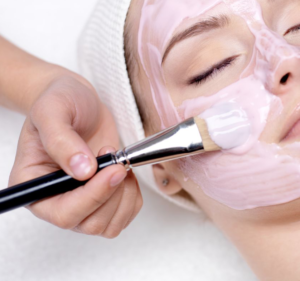
 Cosmetic surgery is a unique discipline of medicine focused on enhancing appearance through surgical and medical techniques. Cosmetic surgery can be performed on all areas of the head, neck and body. Because treated areas function properly but lack aesthetic appeal, cosmetic surgery is elective.
Cosmetic surgery is a unique discipline of medicine focused on enhancing appearance through surgical and medical techniques. Cosmetic surgery can be performed on all areas of the head, neck and body. Because treated areas function properly but lack aesthetic appeal, cosmetic surgery is elective. Dermatology is the branch of medicine dealing with the skin, nails, hair and its diseases. It is a specialty with both medical and surgical aspects. A dermatologist treats diseases, in the widest sense, and some cosmetic problems of the skin, scalp, hair, and nails.
Dermatology is the branch of medicine dealing with the skin, nails, hair and its diseases. It is a specialty with both medical and surgical aspects. A dermatologist treats diseases, in the widest sense, and some cosmetic problems of the skin, scalp, hair, and nails. Dental Care involves brushing and flossing your teeth regularly, seeing your
Dental Care involves brushing and flossing your teeth regularly, seeing your  Teeth cleaning which is also known as oral prophylaxis is a procedure for the removal of tartar (mineralized plaque) that even with careful brushing and flossing may develop, especially during routine tooth brushing where areas that are difficult to reach. The procedure includes tooth scaling and tooth polishing and debridement if tartar has accumulated much more than normal.
Teeth cleaning which is also known as oral prophylaxis is a procedure for the removal of tartar (mineralized plaque) that even with careful brushing and flossing may develop, especially during routine tooth brushing where areas that are difficult to reach. The procedure includes tooth scaling and tooth polishing and debridement if tartar has accumulated much more than normal.